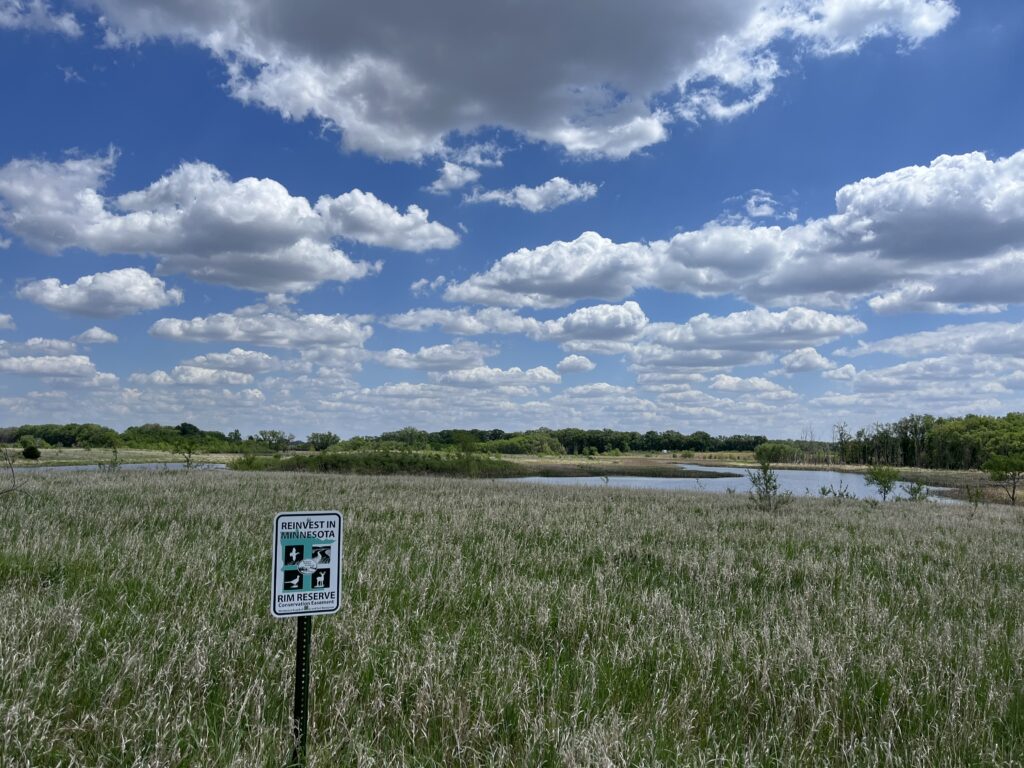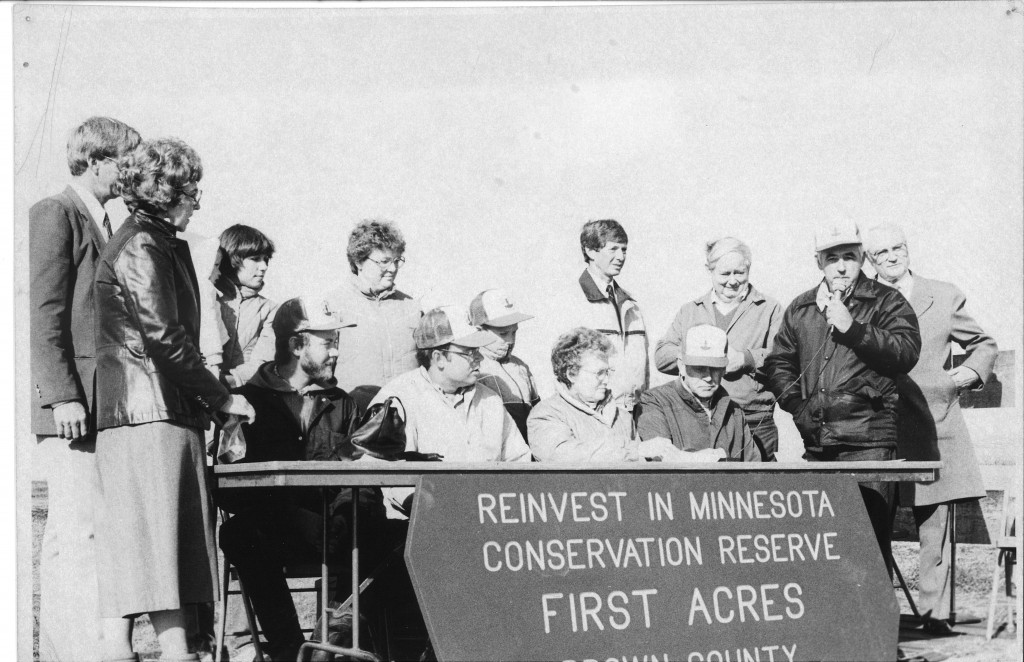Reinvest In Minnesota (RIM) Reserve Program
What is RIM?
In 1986, the Reinvest in Minnesota Resources Act was enacted to restore environmental sensitive agricultural land to protect soil and water quality and to support fish and wildlife habitat. The program reimburses landowners for enrolling their land in a permanent conservation easement, and then provides assistance to restore the area to grass, trees, or wetlands. Currently the program focuses on permanent wetland restoration, adjacent native grassland, wildlife habitat complexes, and permanent riparian buffers.
The program is managed on the state level by the Minnesota Board of Water and Soil Resources (BWSR). Locally, soil and water conservation districts implement the program.
Eligible Lands:
-
Sensitive groundwater: Lands where there is a significant risk of groundwater degradation from activities conducted at or near the land surface (e.g. sinkholes and areas adjacent to public supply wells.)
-
Riparian lands: Lands adjacent to public waters, drainage systems, wetlands or locally designed priority waters identified in a comprehensive local water management plan.
-
Wetland restoration areas: Lands containing legally drained wetlands that are feasible to restore to their pre-drainage condition.
-
Marginal agricultural cropland: Lands that are classified as highly erodible and have been cropped two of the five years prior to the date of application.
-
Other environmentally sensitive lands: Lands such as pastured hillsides, agricultural woodlots and living snow fences, which provide protection of water and soil resources and furnish important fish and wildlife habitat.
How does it work?
- The Minnesota Board of Water and Soil Resources (BWSR) acquires conservation easements to permanently protect, restore, and manage critical natural resources without owning the land outright.
- The land remains in private ownership.
- Landowner retains responsibility for maintenance and paying applicable real estate taxes and assessments.
RIM Easement – Site Inspections
RIM easement site inspections are performed to ensure the landowner is fulfilling easement terms, provides an opportunity for the SWCD and the landowner to discuss progress of conservation practice installation and establishment.
Site inspections are required for the five consecutive years beginning the year after the easement is recorded. Thereafter, inspections will be performed every three years.
- Example Timeline – 2014 Easement recorded (anytime during calendar year)
First 5 Years Begin 3 Year Rotation
| 2015 | 1st site inspection | 2020 | no inspection |
| 2016 | 2nd site inspection | 2021 | no inspection |
| 2017 | 3rd site inspection | 2022 | inspection required |
| 2018 | 4th site inspection | 2023 | no inspection |
| 2019 | 5th site inspection | 2024 | no inspection |
| 2025 | inspection required |
When are Site Inspections Completed?
BWSR will annually notify SWCDs of which RIM easements are due for inspection each given year. For easements requiring site inspections, these will generally be completed during May through August by the SWCD.
Brown County is home to 72 RIM easements totaling 2,072.70 acres.
Article – RIM First Acres Ceremony in Brown County at Runck Dairy Farm
More information:

